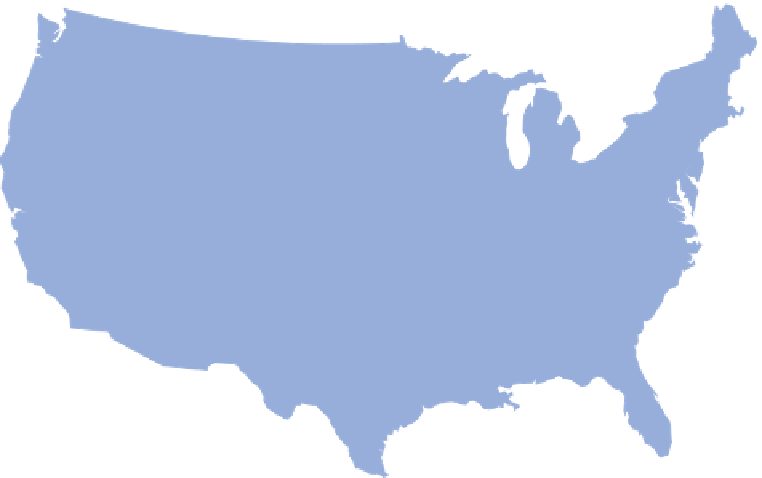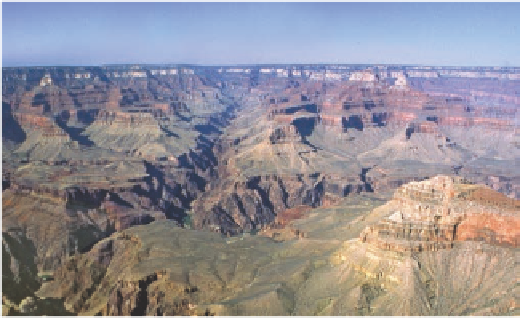Geoscience Reference
In-Depth Information
The Geologic Timescale Viewed Analogously Within a Calendar YearT
T A B L E 1 2 . 2
Event
Age*
Analogous Time in Calendar Year
Earth formed
4.6 by
Jan. 1
First single-celled organism
3.2 by
mid-April
Oxygen in atmosphere
2.0 by
mid-July
First cell with nucleus
1.0 by
Oct. 12
First vertebrates
625 my Nov. 10
Nov. 10
First land plants
340 my Dec. 3
Dec. 3
First reptiles
220 my Dec. 13
Dec. 13
First mammals
155 my Dec. 18
Dec. 18
Grand Canyon downcutting
10 my
Dec. 31, 5
a
.
m
.
Early hominids
3 my
Dec. 31, 6
p
.
m
.
Your birth
~18
Dec. 31 (0.05 sec before midnight)
*by = billion years ago; my = million years ago.
A Holistic View of Geologic Time and
the Rock Cycle: The Grand Canyon
and the Spanish Peaks of Colorado
Although time analogies are fun and useful to consider, it is
possible to sense the essence of deep time more directly when
you travel. An excellent place to feel the incredible depth of
time is the Grand Canyon in Arizona (Figure 12.20) because it
contains rocks that span much of Earth history (Figure 12.21).
As a result, the rocks tell us a great deal about Earth's evolution
and the environmental changes that have occurred over time in
what is now northwestern Arizona.
The oldest rocks are Precambrian in age and are found in
the inner gorge of the canyon. The best known of these oldest
rocks is the Vishnu Schist, which is a metamorphic rock about
2.0 to 1.7 billion years old. This rock layer was the foundation
of an ancient mountain chain that was subsequently eroded
between about 1.7 and 1.25 billion years ago. Additional
rocks of Precambrian age formed between approximately
1.25 billion and 825 million years ago.
Nevada
Utah
Colorado
California
Arizona
New
Mexico
(a)
Grand
Canyon
Figure 12.20 The Grand Canyon.
One of the rea-
sons that the Grand Canyon is such a fascinating
place is because it exposes rocks that span the past
2 billion years of Earth history.
0
500 km
0
500 mi
(b)


































